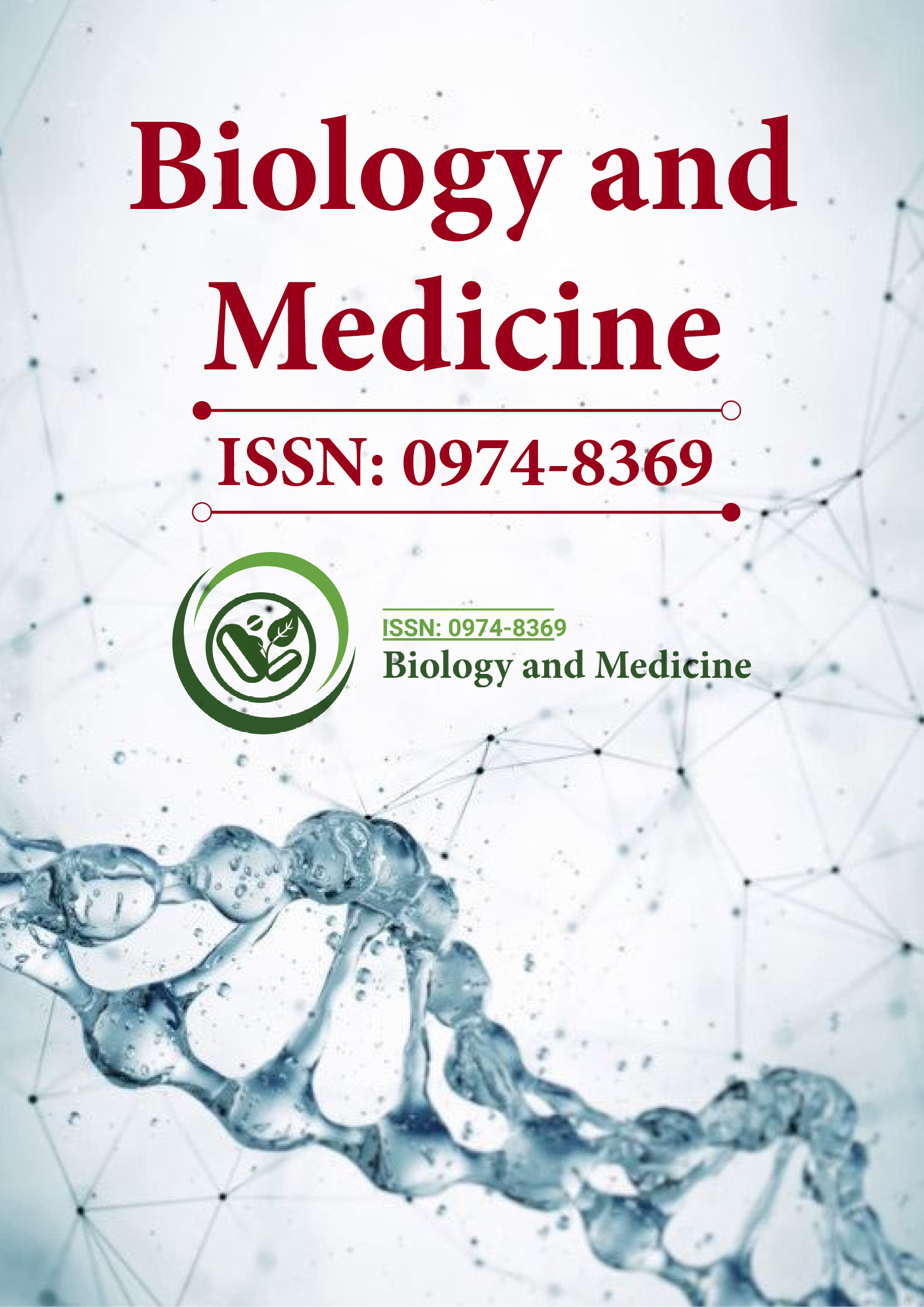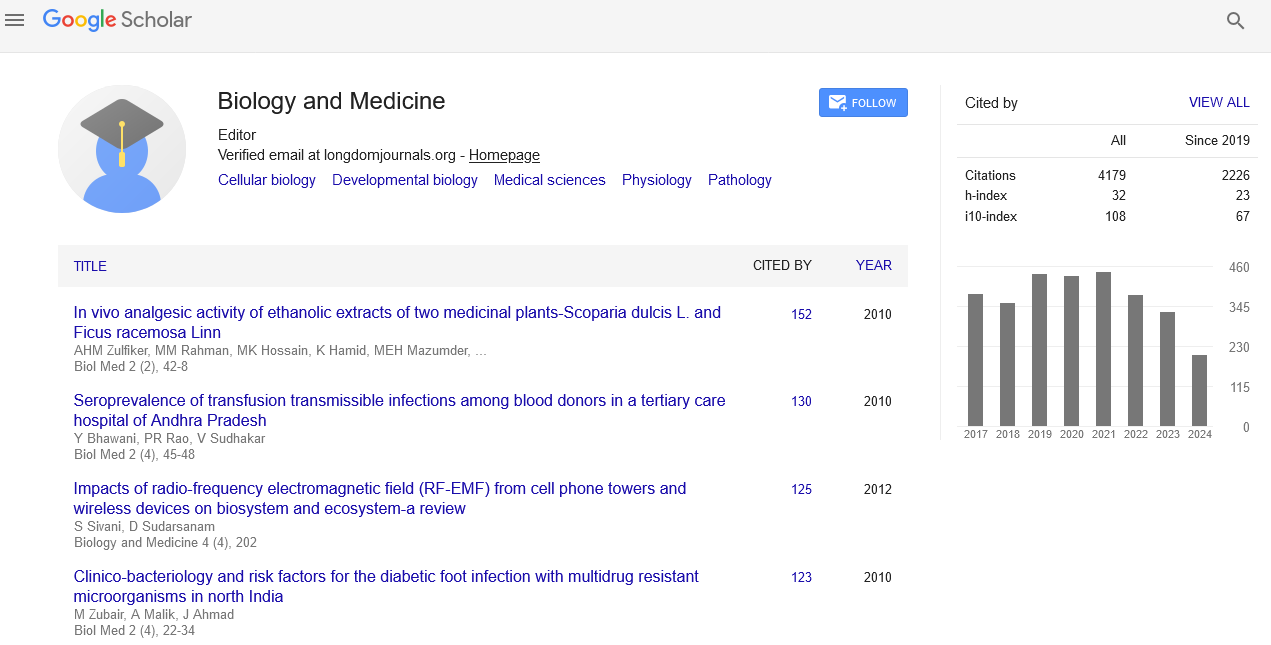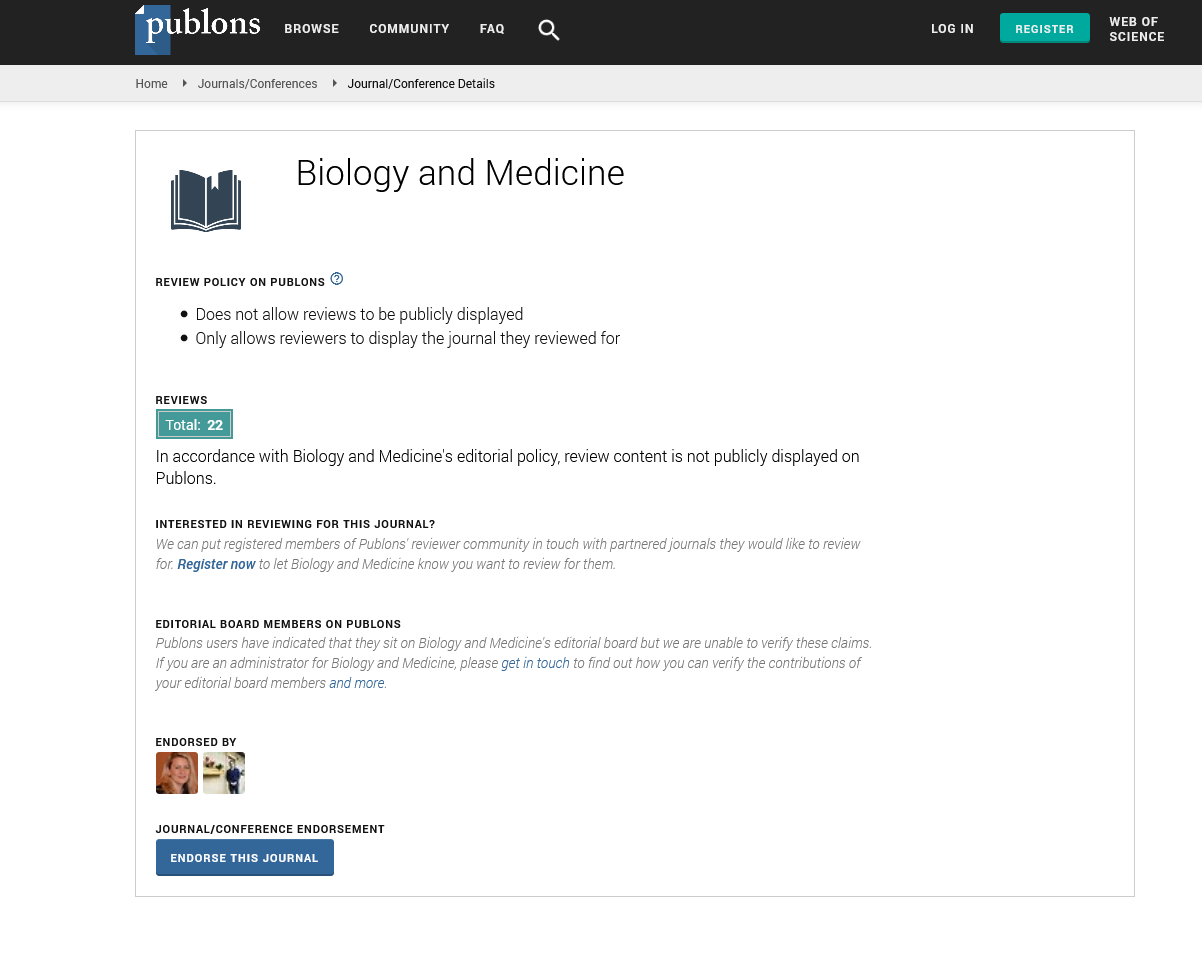Indexed In
- Open J Gate
- Genamics JournalSeek
- CiteFactor
- Cosmos IF
- Scimago
- Ulrich's Periodicals Directory
- Electronic Journals Library
- RefSeek
- Hamdard University
- EBSCO A-Z
- Directory of Abstract Indexing for Journals
- OCLC- WorldCat
- Proquest Summons
- Scholarsteer
- ROAD
- Virtual Library of Biology (vifabio)
- Publons
- Geneva Foundation for Medical Education and Research
- Google Scholar
Useful Links
Share This Page
Journal Flyer

Open Access Journals
- Agri and Aquaculture
- Biochemistry
- Bioinformatics & Systems Biology
- Business & Management
- Chemistry
- Clinical Sciences
- Engineering
- Food & Nutrition
- General Science
- Genetics & Molecular Biology
- Immunology & Microbiology
- Medical Sciences
- Neuroscience & Psychology
- Nursing & Health Care
- Pharmaceutical Sciences
Opinion Article - (2025) Volume 17, Issue 4
Regenerative Medicine: Healing Through Stem Cells and Tissue Engineering
Linh Tran*Received: 12-Feb-2025, Manuscript No. BLM-25-28794 ; Editor assigned: 14-Feb-2025, Pre QC No. BLM-25-28794 (PQ); Reviewed: 28-Feb-2025, QC No. BLM-25-28794 ; Revised: 07-Mar-2025, Manuscript No. BLM-25-28794 (R); Published: 14-Mar-2025, DOI: 10.35248/0974-8369.25.17.765
Description
The field of regenerative medicine represents one of the most exciting frontiers in modern healthcare. At its core, regenerative medicine seeks to harness the power of stem cells, tissue engineering, and gene editing to repair or replace damaged tissues and organs. This approach aims not only to treat the symptoms of diseases but also to regenerate the underlying biological structures that are damaged, offering the possibility of true healing.
In recent years, significant advancements in stem cell therapy have shown promise in treating a wide variety of conditions, from heart disease to spinal cord injuries and neurodegenerative disorders. Alongside this, tissue engineering has made strides in creating bioartificial organs, and gene editing technologies like CRISPR have paved the way for targeted approaches to repair damaged tissues at the genetic level.
However, despite these breakthroughs, regenerative medicine still faces numerous hurdles. From ethical concerns regarding the use of stem cells to technical challenges in creating fully functional bioartificial organs, there is much work to be done. Furthermore, navigating the regulatory landscape to bring these treatments to the clinic presents an additional challenge. In this article, we explore these issues in detail and discuss the potential future of regenerative medicine.
The promise of stem cell therapy
Stem cell therapy stands at the forefront of regenerative medicine, offering the potential to treat conditions previously thought to be irreversible. Stem cells possess a unique ability to differentiate into various types of specialized cells, making them ideal candidates for tissue repair. One of the most well-known stem cell therapies involves the use of hematopoietic stem cells for bone marrow transplants, which have been used for decades to treat certain cancers and blood disorders.
Beyond blood-related conditions, recent advances in induced pluripotent stem cells (iPSCs) have allowed researchers to create patient-specific cells that can be reprogrammed to become almost any type of cell in the body. This has significant implications for diseases such as Parkinson’s disease, where dopamine-producing neurons can be generated from a patient’s own cells for potential transplantation.
Despite these promising developments, challenges remain. One of the most significant hurdles is the risk of immune rejection when using stem cells from different individuals. In the case of iPSCs, even though they are derived from a patient’s own cells, the process of reprogramming can introduce genetic abnormalities, making the safety of these therapies a subject of ongoing research.
Tissue engineering and bioartificial organs
Tissue engineering, a field closely tied to regenerative medicine, focuses on creating artificial tissues and organs that can replace damaged ones. By combining biomaterials, stem cells, and growth factors, scientists have developed techniques to grow tissues in the laboratory that can potentially be transplanted into the human body.
The creation of bioartificial organs has been one of the most exciting developments in tissue engineering. Bioengineered bladders, tracheas, and even kidneys have been successfully created in the lab, with a few of them being used in clinical trials. These organs are made by seeding biocompatible scaffolds with stem cells, allowing them to grow and develop into functional tissues. While some bioartificial organs have been successfully implanted in animal models and humans, creating fully functional, complex organs such as hearts and livers remains a distant goal.
A significant challenge in tissue engineering is ensuring that the created tissues possess the vascular network necessary to supply oxygen and nutrients to all of their cells. Without an adequate blood supply, tissues may not survive once transplanted into the body. Research is ongoing to develop vascularization techniques that can be incorporated into bioengineered tissues to make them viable for transplantation.
Gene editing: Revolutionizing tissue regeneration
Gene editing technologies, particularly CRISPR-Cas9, have the potential to revolutionize regenerative medicine by enabling the targeted modification of genes that are responsible for disease. In the context of tissue regeneration, gene editing could be used to correct genetic mutations that lead to degenerative diseases or to stimulate the body’s own cells to regenerate tissues more effectively.
For instance, researchers have used CRISPR to edit the genes of stem cells to improve their regenerative potential. In animal models, gene-edited stem cells have been used to regenerate heart tissue after a myocardial infarction or to repair nerve damage caused by spinal cord injuries. Additionally, gene editing could help address the issue of immune rejection by modifying stem cells to make them less likely to trigger an immune response.
Despite its enormous potential, gene editing in regenerative medicine is still in its early stages. Ethical concerns surrounding the modification of human embryos and the unintended consequences of gene editing remain significant barriers to its widespread use. Furthermore, there are still concerns about the precision of these techniques and the potential for off-target effects, where unintended parts of the genome may be altered.
Ethical and regulatory challenges
One of the most pressing issues facing regenerative medicine is the ethical concerns associated with stem cell use. The use of embryonic stem cells has been particularly controversial due to the ethical dilemma surrounding the destruction of human embryos. While iPSCs provide an alternative source of stem cells that avoids this issue, their safety and long-term effects are still not fully understood.
Furthermore, the regulatory environment for regenerative medicine is complex and varies significantly between countries. In some regions, there are strict regulations governing the use of stem cells, gene editing, and tissue engineering technologies, which can slow down the process of bringing new treatments to patients. In other regions, the regulatory landscape may be more lenient, raising concerns about the safety and efficacy of unregulated therapies.
The challenge, therefore, is to strike a balance between innovation and safety. It is essential that rigorous clinical trials and regulatory oversight are in place to ensure that regenerative treatments are both safe and effective. Collaborative research between scientists, clinicians, ethicists, and regulators will be essential to navigate these challenges and bring regenerative therapies to the clinic.
The future of regenerative medicine
Despite the challenges, the future of regenerative medicine holds great promise. Advances in biomaterials, genetic engineering, and cell-based therapies are bringing us closer to the reality of regenerating entire organs, reversing damage caused by disease, and offering patients the possibility of healing that was once thought unattainable.
In the coming years, we expect to see further breakthroughs in stem cell therapies, with a particular focus on improving their safety, reducing the risk of rejection, and enhancing their regenerative potential. Tissue engineering is also poised to make significant strides, with more complex organs being created and tested for clinical use. Gene editing technologies will continue to improve, offering targeted treatments for a range of diseases and potentially accelerating the body’s natural regenerative processes.
Conclusion
Regenerative medicine is on the cusp of transforming the way we treat disease and injury. The combination of stem cell therapy, tissue engineering, and gene editing holds the potential to heal damaged tissues and organs in ways that were previously unimaginable. However, significant challenges remain, including ethical concerns, technical limitations, and regulatory hurdles.
Citation: Tran L (2025). Regenerative Medicine: Healing Through Stem Cells and Tissue Engineering. Bio Med. 17:765.
Copyright: © 2025 Tran L. This is an open-access article distributed under the terms of the Creative Commons Attribution License, which permits unrestricted use, distribution and reproduction in any medium, provided the original author and source are credited.


